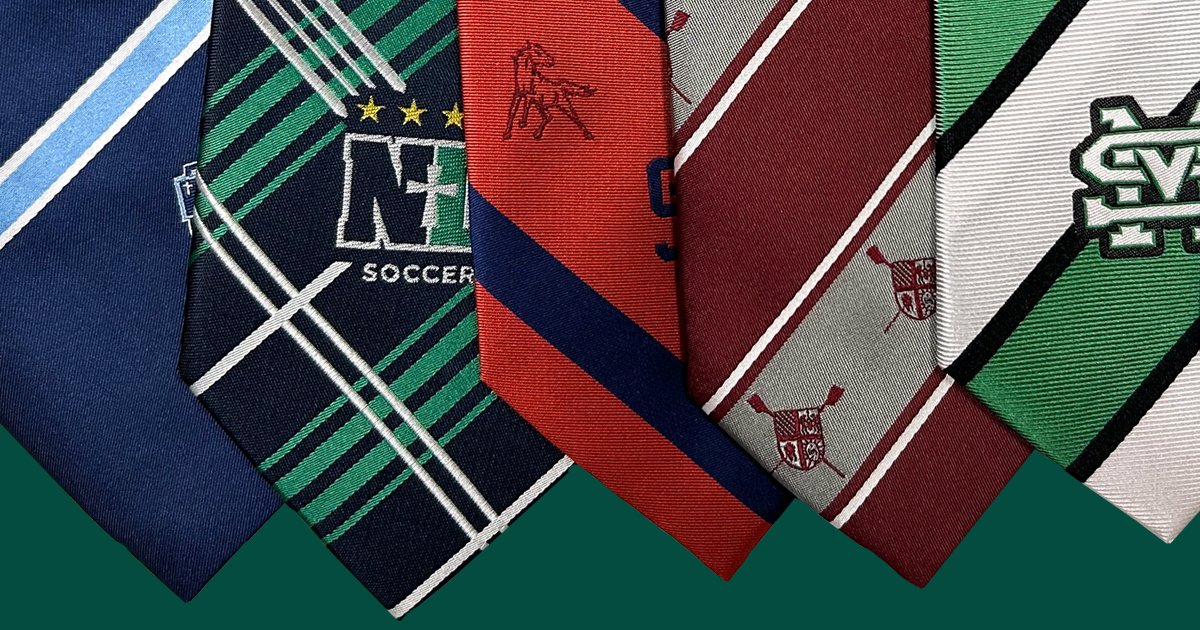
School Ties: The History of School Uniforms
School uniforms are ubiquitous nowadays, but use of uniforms in Britain influenced the adoption of uniforms in American public schools. Uniforms provide a sense of unity and equality, therefore students are not unfairly judged based on their clothing. Uniforms can be associated with conformity, but the past and the present provide examples for unique expressions within uniform dress. Join us on a quick history of the school uniform!

British Birthplace
England is the originator of the school uniform. In 1222 the Cappa Clausa cloak was the first recorded use of specific clothing in an academic setting. During the 16th century, charity schools required a uniform for their students. These schools allowed orphans or other less fortunate children to attend school taught by clergymen through funding from London’s wealthy citizens. Christ’s Hospital in Horsham, West Sussex, created a unique color combination of brilliant blue jackets with bright yellow stockings for their uniform in 1552. The traditional Christ’s Hospital uniform is still worn today! Contemporary students of Christ’s Hospital school embrace their bluecoat uniforms as part of the school’s identity.

Image Credit: Christ’s Hospital
Over time, uniforms in England went from being associated with charity schools to becoming the dress code for private and preparatory schools. Eton College, one of England’s most prestigious boarding schools, had a top hat, waistcoat, and tailcoat uniform until 1972, when the dress code began to modernize. School ties became popular in the 1890s after the British Army began wearing neckties with regimental colors. Schools created tie patterns using school colors, and to this day the ties for certain schools, graduation classes, and other milestones are kept as keepsakes by their former students. Soon blazer and tie uniforms were standard dress for most public and private British schools. Contemporary uniforms incorporate casual elements like polo shirts or sweatshirts. To this day, many schools embrace the historical traditions of their unique uniforms, at very least for special occasions.

Uniforms, American Style
In the United States, school uniforms were first used for private and parochial schools in the 1900s. They were slow to adopt outside of this context until the 1980s, when gang colors and displays of wealth through designer clothing were seen as inappropriate for a learning space. Uniforms in American public schools today are used to reduce bullying, peer pressure, and economic and social barriers between students.
Worldwide Wear
Uniforms are very popular across the globe, as the Brits exported their appeal to India through the British Raj, as well as to their commonwealth countries and colonies. Missionary schools in Africa use uniforms in order to differentiate their students from other children who unfortunately are not able to attend school. Uniforms are common throughout the Asian Pacific region. Japan modeled their uniforms for girls from European sailor suits and those for boys from Prussian army uniforms. Through Japanese cultural imports like anime and video games, the school uniform is a big part of character style and cosplay across the world.

Want your Uniforms to Look Sharp?
We can help with that! Coordinate your colors in ties, scrunchies, or socks. We have Hawaiian shirts for fun wear and bowties for formal wear. Custom apparel can help your school colors sing! Contact us to get your project started.


